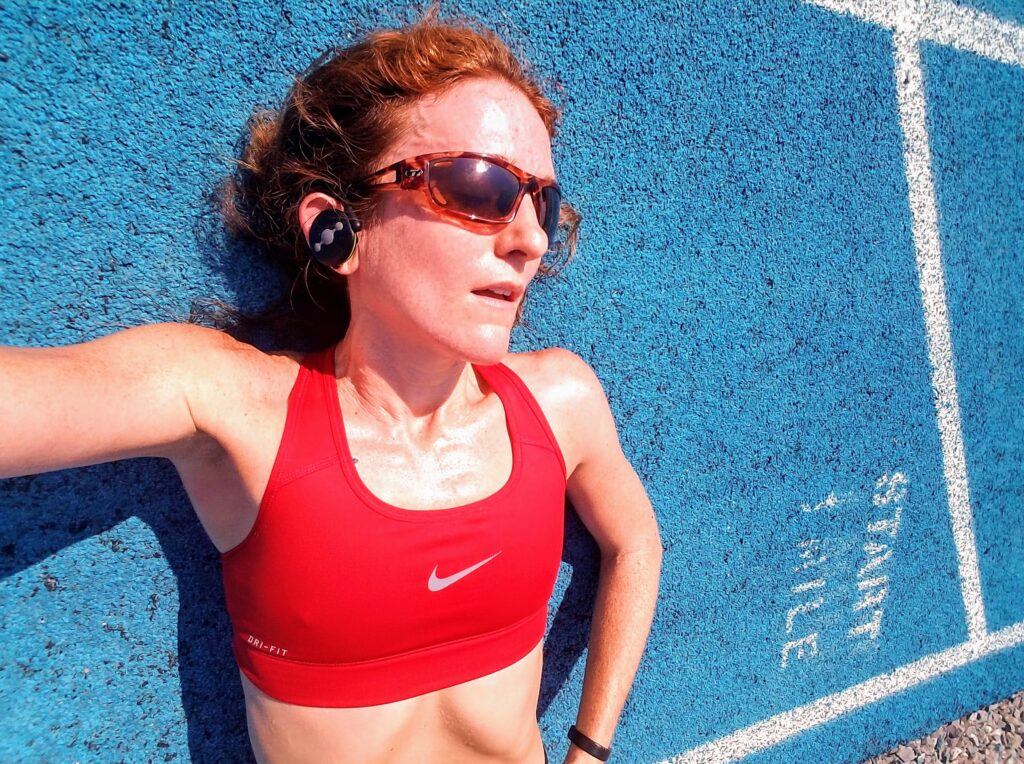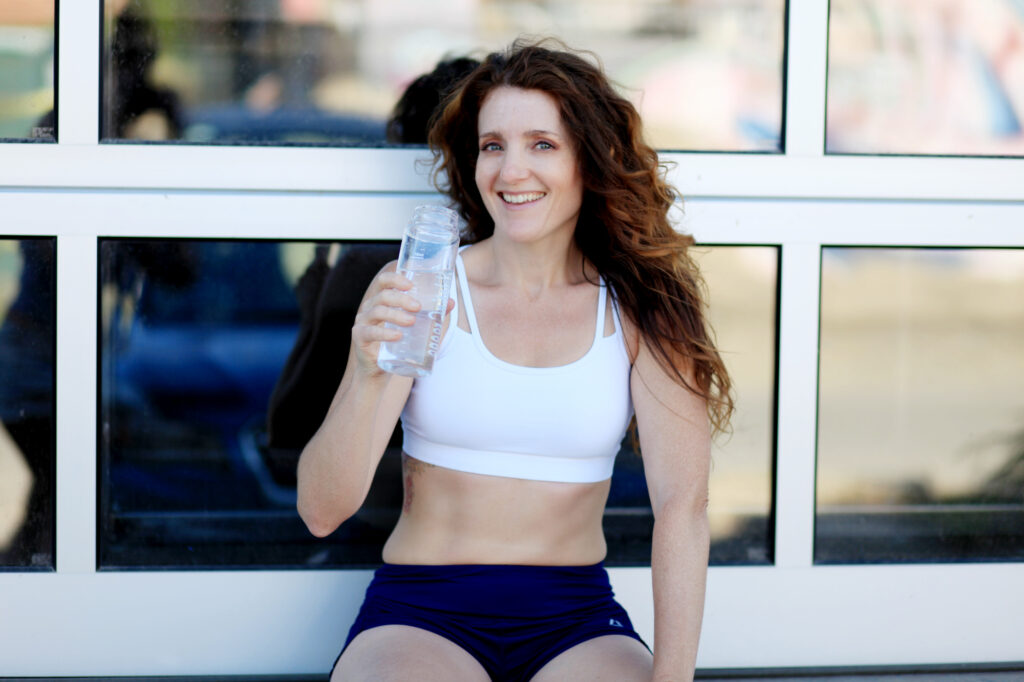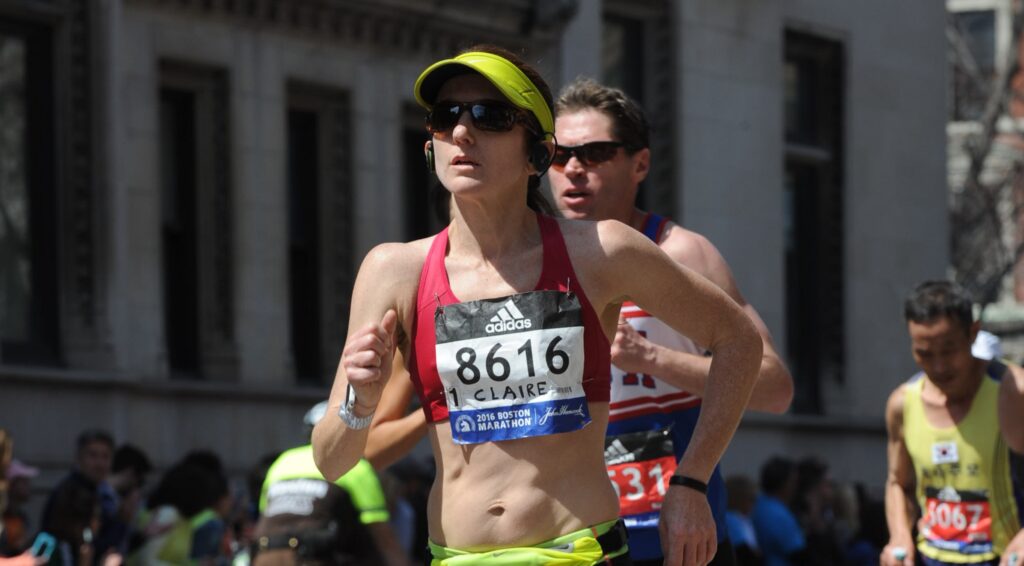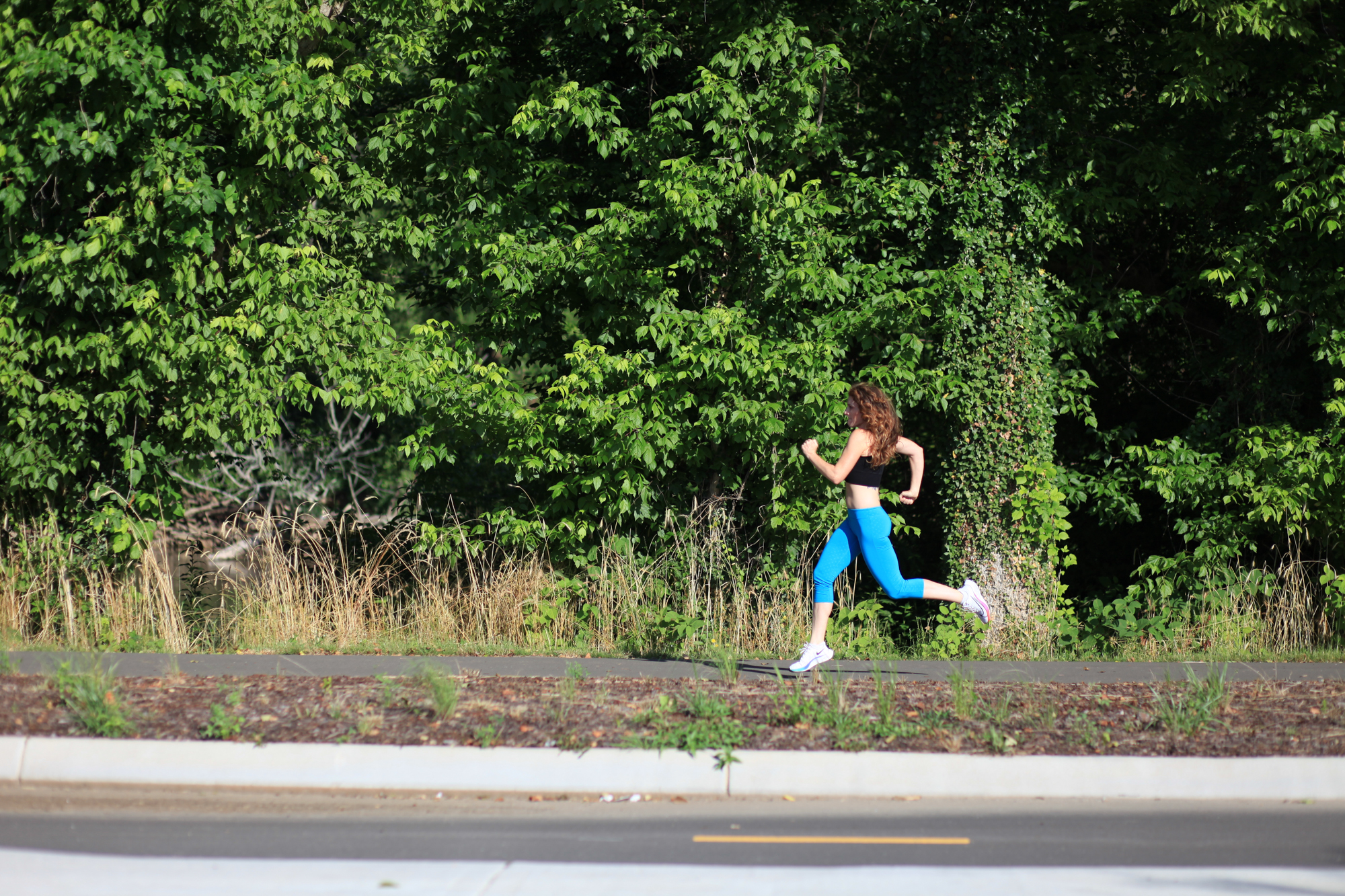Warm weather is officially here in the Northern Hemisphere and while longer days leave lots more time for running, the sun, heat and humidity can make running miserable. But unless you’d like to spend the season on a treadmill in the air-conditioning, learning to run better in the heat is your best option.
The good news is that all your sweaty work this summer will pay off with faster times in the fall, when things cool off a little.
Let’s get into the science of what is happening when you run in the heat and then offer some suggestions that can help you train this summer more effectively, despite the temperatures.

The Effects of Heat on the Body
Heat and humidity impact performance both in the short term and the long term.
As you begin to run in the heat, the ambient temperature starts to heat you up in addition to the heat you are creating from running. Add in direct sunshine radiating heat on your skin and you’ve got a trifecta of heat generation.
Soon your overall body temperature will start to rise. Just like when you run a fever, the higher your core body temperature, the worse you are going to feel.
In an attempt to cool you down, your heated blood is diverted to the skin, and you start to sweat. The sweat itself doesn’t really cool you down. It’s only when it evaporates that you start to feel cool. If it’s so humid that the evaporation process can’t happen, no amount of sweating will be much help in cooling you down.
While the blood is being rerouted to your skin, less blood is available to transport oxygen to the working muscles. Less oxygen means you can’t run as fast or as hard. If you are trying to speed up, like in a race, it will take a considerable amount of effort.
Dehydration
And of course, with all that sweat leaving the body, you run the risk of dehydration, which compounds the issue because it puts a wrench in your ability to cool yourself down. So your core temperature simply gets hotter and hotter, further slowing you down and potentially even putting you in danger of heat exhaustion or heat stroke.
But it’s not just the run that’s impacted by the heat. A single run in hot and humid conditions can impair recovery leading to diminished performance on your next few runs.
The reason for this is simple. After a hot run, your body will prioritize cooling itself and restoring hydration levels rather than delivering nutrients to your muscles.
When the muscles can’t get the nutrients they need to repair the damage caused by the workout, recovery is slower and you may not be fully prepared for your next hard workout like you normally would be.
Okay, so now we know why running in the heat is so tough. So what do we do about it?
Avoid the Heat If You Can
The first strategy is to do your best to avoid it. That could mean treadmill runs in the AC as I mentioned, or it could be timing your runs to avoid the brutal heat of the day. Choosing a shady route or getting into the woods for a trail run can help as well because you are removing one source of heat–the radiant heat created from the sun on your skin.
But sooner or later, the heat will catch up with you, so let’s talk about what you should do if you can’t avoid it or if you want to learn to adapt to it better.
Slow Down Your Paces
The most important thing you can do is SLOW down your paces. It’s a scientific fact that even the most heat acclimatized runner will suffer performance loss in hot conditions. In order to stay true to the goals of each of your runs, you will have to slow down. Those training paces that your coach wrote for you assume that you are running in perfectly cool temperatures, on a flat surface, with zero wind, and the stars perfectly aligned to your zodiac sign. If that’s not what the day gave you, it’s time to adjust!
Easy runs should be easy, even in the heat. Hard workouts should be challenging, but doable, not all-out efforts that come close to killing you. This could mean that you’ll need to slow down your paces 10, 20, 30 seconds per mile or more to get the same effect.
Speaking of workouts, you do not want to jump into a fast-paced workout the very first hot day you get. It’s better to begin the process of heat acclimatization over a couple of weeks with a few hot easy runs. If that goes well, then you can add in some hot workouts.
Hydration
Your next line of defense is proper hydration. But what does that even mean? I wish I could just tell you an exact amount to drink on a hot day, but each runner’s sweat rate is dramatically different.

How do you find out yours? The simple way to estimate your sweat rate is to weigh yourself naked before and after a hot run, and subtract the amount of fluid you took in. That will give you a rough idea of how much fluid you lose on a run.
Now, you don’t have to replace all of what you sweat out during the run itself. That would lead to a lot of sloshing tummies. What you don’t want to do is lose more than about 2.5% of your body weight during a run. For a 150lb runner, that’s about 3.75 pounds or 60 ounces of fluid.
That does not mean that you should NOT hydrate at all if you lose less than that, however. Training your body to drink on the run will not only help you feel better and perform better, but it’s something that you need to practice before race day.
A great way to minimize hydration losses is to be sure that you are pre-hydrating yourself the day before you run and potentially adding a little extra sodium to your diet to increase water retention. Now that sounds strange to recommend sodium and water retention, and it’s not right for all runners, but for many healthy runners, it can make a big difference. If you are on a low-sodium diet for medical reasons, be sure to check with your doctor before increasing sodium intake.
Set Yourself Up For Success
My favorite way to think about it is to give yourself every chance to run your best, especially on harder runs. The more successful your most challenging runs are, the more effective your training. So that means fuel well, sleep well, hydrate well so you can run your best. There are lots of ways to purposely make running harder by fasting, under-hydrating, and over-stressing, but if you do that all the time, you are training your body to survive, and not to thrive.

Racing in the Heat
Training in the heat is one thing, but what about racing in the heat? How can you maximize performance on a hot race day?
Again, the first step is the same–try to avoid it. When choosing races, aim to find those that have a low chance of hot weather if this is a big, important race. Or if the heat can’t be avoided, consider switching to shorter events, like the 5k instead of the marathon, during the summer.
But of course, sometimes we just get back luck and the weather is just not going to cooperate. What now?
Acclimitization
Hopefully, you’ve had a chance to have at least 2 weeks of hot weather running before race day so your body becomes more efficient at running in the heat. But if that’s not possible, there are a few techniques that you can try that might help. And the reason I say might is that there are really no guarantees when it comes to the heat.
One common trick is to wear extra layers of clothes on your runs in cool conditions when you are expecting a hot race day. This will certainly stimulate some adaptations, but I can promise you that it’s not going to be super enjoyable.
Some athletes use saunas and hot tubs in the two weeks before a hot race. Elite athletes have even been known to run on a treadmill inside a hot sauna to recreate hot race conditions. Personally, I’d take sitting in a hot tub over a sauna session on the treadmill, but I hope that I don’t have to warn you that this could be a very rough session if you try it.
Like all things running, these techniques vary in degrees of success from one runner to the next. Anecdotally, some runners find these tough heat sessions actually impair race day performance, so be very careful going overboard with a new technique in the critical weeks before your race.
Pre-Race
On race day, there are several steps that can help slow the overheating process. Nothing can eliminate the heat’s effects completely, but there are a few things you can do to push that point down the road.
The first is pre-cooling before a race. The goal is to slightly lower your core body temperature before you start running, which will extend the amount of time you can run hard before overheating.
Research has shown that pre-cooling can significantly improve performance in hot and humid conditions by as much as 16%.
So how do you do it?
You can purchase a specific pre-cooling vest that you’d wear for 10-20 minutes before the race or during the warm-up. That is certainly a simple option, but not everyone will have access to a fancy frozen vest.
Other options are a quick ice bath, drinking a frozen slushie or popsicle, or using some frozen washcloths on your skin. Obviously, these choices are logistically more difficult to pull off in a big city race where you are staying in a hotel room. But even drinking some ice water or using cold compresses will help.
Of course, don’t do anything on race day that you have not practiced many times before and don’t do something extreme enough to give you frostbite or freezer burn. I hate that I even have to mention this, but we all know runners that take good advice to the extremes!
Coat yourself in sunscreen and be sure that you are dressed in light colored clothing, sunglasses, and a hat or visor. I prefer a visor as it lets heat from my heat escape, but others may prefer the sun protection of a full hat.
Race Smart
Once the gun goes off, racing smart in the heat is your best strategy. Given enough heat and enough time, you will slow down. Everyone slows down. Please accept this fact. It’s far better to be in control as long as possible instead of racing as if the heat won’t catch you. It will. But if you start conservatively, you’ll have a lot better chance of it catching up to you after you cross the finish line instead of before.
It’s important to note that as runners, we are used to pushing ourselves harder than most other people. We train ourselves to push through hard times to discover what we are capable of. But overdoing it in the heat can be dangerous and downright deadly so there are a few signs to watch out for.
Danger Signs
If you begin to feel chills and have goosebumps on your skin, stop running immediately as this is a sign of heat exhaustion which could lead to heat stroke. You can walk, as long as no further symptoms develop, such as dizziness, confusion, nausea, headache or vomiting. Hydrate with water or a sports drink and try to get in the shade.
Heat stroke is a medical emergency and is characterized with some similar symptoms, but instead of cool, clammy, skin, you are red, hot, and dry and your body temperature is very hot. You are likely to become very dizzy and confused and may pass out. If you or another runner is experiencing these symptoms, forget about the race and get help immediately.
Summer Heat = Fast Fall
Running hard in the heat is one of the toughest challenges for any runner. The most important thing you can do is respect the heat, prepare carefully for the conditions, and adjust your expectations of success.
The good news is that once cooler temperatures return in the fall, your hard work in the heat should pay off with faster times with less effort.

